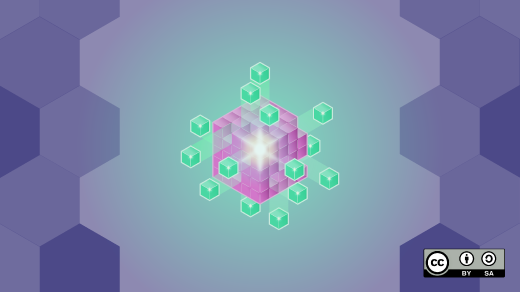In the first part of this review of Blockchain Revolution by Don Tapscott and Alex Tapscott, I presented some of the ways the authors suggest blockchain technology will impact organizations. In particular, I examined the open organization principles (transparency, inclusivity, adaptability, collaboration, community) and the reasons we practice them (building a network of people dedicated to a purpose and sharing the same ethical standards, for example).
I also analyzed blockchain's potential impacts on the area of internal and external organizational costs. More specifically, I explored costs in five areas, namely:
- the cost of searching (finding the right information, people, resources to create things),
- the cost of contracting (negotiating the cost for labor and materials for every activity in the operation, in keeping trade secrets, and in policing and enforcing all agreements),
- the cost of coordination (getting people working on a project and coordinating their activities efficiently,
- the cost of establishing trust (which currently assume that internal personnel have a higher commitment to the organization), and
- the cost of transactions.
In this second part, I'll take a close look at how the authors think blockchain technology will influence specific kinds of activities. I'll explore the authors' proposals for leveraging this technology for each type of task in the future.
What tasks will blockchain impact?
When discussing blockchain's potential impact, the authors focus on two factors: task repetition and complexity.
- Repetition: How often is a process repeatedly performed? Could it lead to automation?
- Complexity: How difficult and/or complicated is the task? Does it require human participation?
The authors then explain that we might classify various projects according to the degree to which they exemplify these characteristics—"high" or "low."
This leads to a fourfold chart that explains the specific impacts blockchain might have on certain economic, social, and political activities. For explanatory purposes, I've adapted one of the author's charts below.
|
High in Complexity Open Networked Enterprises Low in Repetition |
High in Complexity Distributed Autonomous Enterprises (DAE) High in Repetition |
|
Low in Complexity Smart Contracts Low in Repetition |
Low in Complexity Computerized Autonomous Agents High in Repetition |
Modified from Blockchain Revolution by Don Tapscott and Alex Tapscott
The authors focus on:
- Smart Contracts
- Open Networked Enterprises
- Computerized Autonomous Agents
- Distributed Autonomous Enterprises (DAE)
Let me explain their arguments regarding each of these applications.
Smart contracts
Smart contracts can easily apply to projects that are low in both repetition and complexity. Smart contracts require initial human involvement in the form of multi-signature (clearly understood and notarized discussions and agreements). During development, humans (up front) will determine and write up the terms of these agreements—but these smart contracts themselves will do the monitoring, enforcement and settlement goals of the terms of agreement those humans have decided on. In addition, authors and signatories of the smart contracts can include incentives in them to promote specific behavior.
Open Networked Enterprises
Open Networked Enterprises would best suit tasks that are high in complexity but low in repetition. At very low cost, smart contracts enable companies to craft clever, self-enforcing agreements with suppliers and partners. Collections of these agreements will start to resemble working networks, trusted company affiliations, or open organizations. In Blockchain Revolution, the authors mention the work of famous Harvard Professor Michael Porter with regard to this phenomenon. Porter considers these Open Networked Enterprises to have competitive advantages that are difficult to duplicate.
Computerized Autonomous Agents
Computerized Autonomous Agents can handle tasks that are high in repetition but low in complexity. These are devices or software systems, perhaps connected via the Internet of Things (IoT), that can be developed to take in information from their environment and make independent choices. They require no human involvement when in normal operation. More specifically, they can perform transactions, acquire resources, make payments, and, in general, create value on behalf of the developers. These systems can collect local environmental information (device to device collaboration) and make decisions in real time (quick adaptability). They perform certain tasks far better and faster than any single machine or human that is not on the local scene.
Distributed Autonomous Enterprises (DAE)
Distributed Autonomous Enterprises (DAE) would be ideal for processes or tasks that are high in both complexity and repetition (some call them Distributed Autonomous Organizations, or DAO). These are projects requiring extensive amounts of computing power and resources to buy services needed, hire people or robots, and acquire partners or resources (such as manufacturing capability or basic marketing expertise) in real time. In any form, if the work is repetitive, then these programs can find a way to complete it. Simply put, it's software and clever code that performs tasks and reports to shareholders.
DAE deep dive
The DAE model is especially interesting from the standpoint of the open organization. Through crowdfunding techniques, say the authors of Blockchain Revolution, DAEs could provide missions statements to millions of shareholders. These shareholders could then invest only pennies in certain projects, which opens up a huge investor pool—an open organization from an investor's perspective. Armed with the agreed-upon mission statement from the shareholders, the DAE will be programmed to perform the specified tasks. Shareholders could also vote, as required, to govern the entity. Much of the day-to-day repetitive decision making can be handled via software.
Everyone and everything work according to specific rules and procedures coded in the DAE smart contracts. When a human is used under a smart contract, they do a specific job, with instant pay, not on a biweekly but daily, hourly or microsecond level.
In these specific cases, DAE corporations could exist without human management executives—only shareholders, capital, and software. Shareholders only exert control over the code. Of course, tasks must be immediate, repetitive work. Long-term planning remains in the domain of humans.
Blockchain cooperatives
Using smart contracts and detailed computer protocols, task specific cooperatives could be formed. The same Distributed Autonomous Enterprises (DAE) characteristics could be applied. Co-ops like these could be associations formed and controlled by people who come together to meet common community, environmental, or social needs. A wide range of cooperatives could be developed to tap into so-called underutilized, time-based resources like real estate (apartment bedrooms underused), vehicles on call (transportation services using unused vehicles), or gig-style work (skills on call).
Although some of the above are now underway, the authors warn that there is still a lot to do before all the above come into mainstream business practices. They are clustered around concerns and barriers in three broad mainstream areas:
- current business disruption,
- legal concerns, consumer protection, and the misuse of this technology, and
- the technology itself, which requires more computing power than what is currently available worldwide
Blockchain Revolution certainly stresses how strongly blockchain technology will impact organizations of the future. Anyone interested in open organization principles—namely greater transparency, inclusivity, adaptability, collaboration and community building—will understand how blockchain will make these values more vital than ever before. Companies should seriously examine their open organization maturity level to prepare for this future—a future that's arriving very quickly.






Comments are closed.